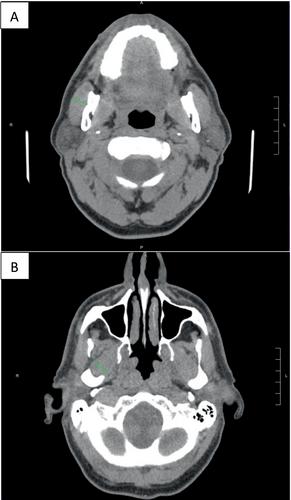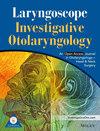Masseter Muscle Size in Chronic Parotid Sialadenitis
Abstract
Objective
The relationship between masseter muscle thickness and parotid duct obstruction resulting in recurrent sialadenitis is not well defined. This study aims to evaluate masseter muscle size in patients with chronic sialadenitis of the parotid and compared to patients without parotid sialadenitis.
Methods
Data was collected retrospectively from patients with symptomatic chronic sialadenitis of the parotid or submandibular glands. Measurements of the masseter and lateral pterygoid muscles were performed on CT or MRI imaging by two investigators who were blinded to the symptomatic gland location. Masseter thickness in the region of the parotid duct trajectory was measured.
Results
Out of 94 total patients, 45 (48%) had chronic sialadenitis of the parotid gland and 49 (52%) had sialadenitis of the submandibular gland without parotid symptoms. There was a statistically significant difference in masseter thickness between patients with symptomatic parotid versus submandibular sialadenitis (parotid: 15.8 mm; submandibular: 14.5 mm; p < 0.001). Patients with parotid sialolithiasis compared to duct stenosis had no difference in masseter thickness size. Higher BMI, male sex, and parotid gland symptoms were significantly associated with increased masseter thickness. Logistic regression analysis showed that female sex and masseter muscle thickness were both significantly associated with parotid gland sialadenitis.
Conclusion
Masseter muscle thickness is significantly larger in patients with symptomatic obstructive parotid sialadenitis. Our findings demonstrate an association between increased masseter size and obstructive parotid sialadenitis that may have implications in disease pathophysiology and considerations for therapeutic paradigms.
Level of Evidence
Level 4.


 求助内容:
求助内容: 应助结果提醒方式:
应助结果提醒方式:


